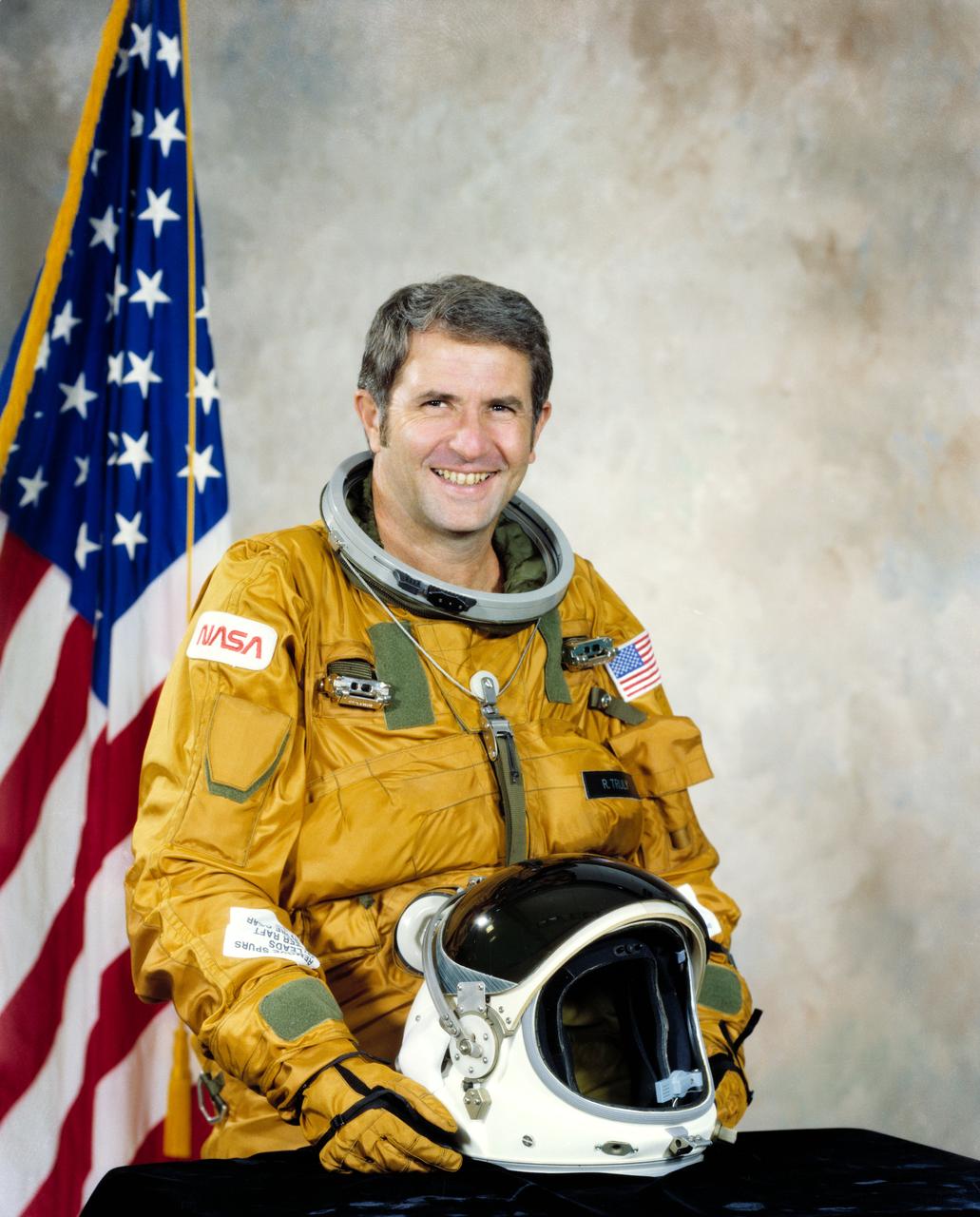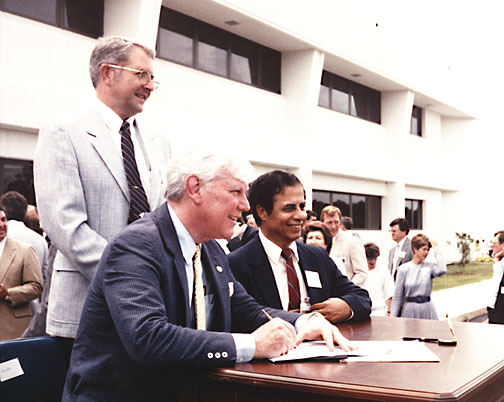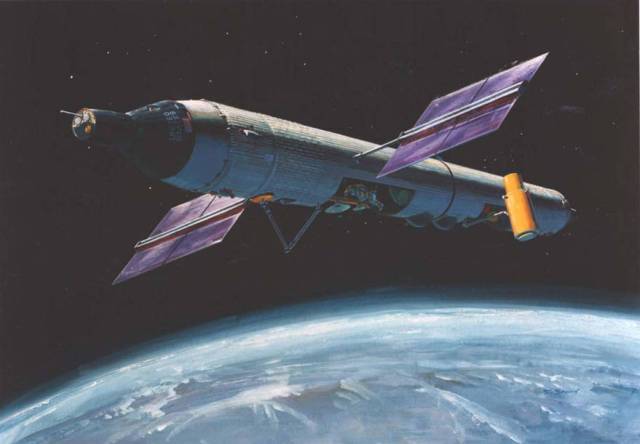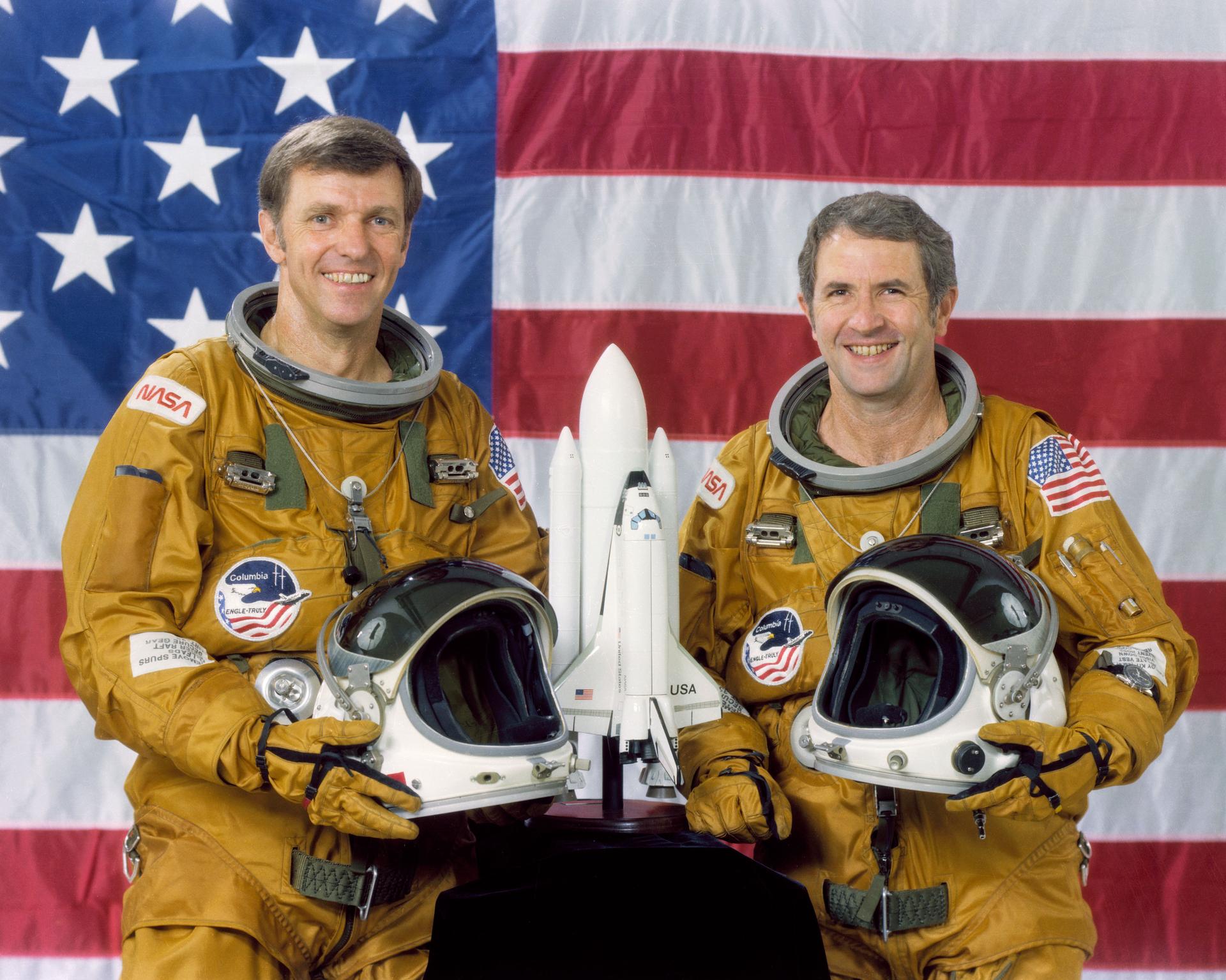
Richard H. Truly
Former Astronaut and NASA Administrator (May 14, 1989–Mar. 31, 1992)
Personal Data
Truly was born in Fayette, Mississippi, on November 12, 1937, and attended school in Fayette and Meridian, Mississippi. He married Colleen Cody Hanner of Milledgeville, Georgia, and they had three children.
Military Service and Education
Truly’s career in the U.S. Navy began in 1959, when he was commissioned an ensign. This coincided with his graduation from Georgia Institute of Technology, which he attended as a Naval R.O.T.C. midshipman and earned a bachelor’s degree in aeronautical engineering.
Following flight school, he was designated a naval aviator in 1960. His initial tour of duty, Fighter Squadron 33, was aboard USS Intrepid and USS Enterprise, and he made more than 300 carrier landings. From 1963 to 1965, he was a student and then instructor at the U.S. Air Force Aerospace Research Pilot School, Edwards Air Force Base, California.
Experience
In 1965, Truly became one of the first military astronauts selected to the Air Force’s Manned Orbiting Laboratory program in Los Angeles, California, and transferred to NASA as an astronaut in August 1969. He served as capsule communicator for all three Skylab missions in 1973 and the Apollo-Soyuz mission in 1975. As a naval aviator, test pilot, and astronaut, Truly logged over 7,500 hours in numerous military and civilian jet aircraft.

He was pilot for one of the two-astronaut crews that flew the 747/Space Shuttle Enterprise approach and landing test flights during 1977. He then was backup pilot for STS-1, the first orbital test of the Shuttle. His first space flight was November 12–14, 1981, as pilot of Space Shuttle Columbia (STS-2), significant as the first piloted spacecraft to be reflown in space. His second flight (STS-8, August 30-September 5, 1983) was as commander of Space Shuttle Challenger, the first night launch and landing in the Shuttle program.
The former Shuttle astronaut served as the first commander of the Naval Space Command in Dahlgren, Virginia, established October 1, 1983.
Vice Admiral Richard H. Truly returned to NASA to become NASA’s Associate Administrator for Space Flight on February 20, 1986. In this position, he led the painstaking rebuilding of the Space Shuttle program. This was highlighted by NASA’s celebrated “return to flight” on September 29, 1988, when Discovery lifted off from Kennedy Space Center, Florida, on the first Shuttle mission in almost 3 years.
He served as NASA’s eighth Administrator from February 1989 to 1992.

Special Honors
On January 18, 1989, Truly was awarded the Presidential Citizen’s Medal by President Reagan. His NASA awards include two NASA Distinguished Service Medals, the NASA Outstanding Leadership Medal, two NASA Exceptional Service Medals and two NASA Space Flight Medals. His military decorations include the Defense Distinguished Service Medal, the Defense Superior Service Medal, two Legions of Merit, the Navy Distinguished Flying Cross, and the Meritorious Service Medal.
Truly also has received the Robert J. Collier Trophy (twice, 1982 and 1989), the Robert H. Goddard Memorial Trophy (twice, 1982 and 1989), the Society of Experimental Test Pilot’s Ivan C. Kincheloe Award (1978) and James H. Doolittle Award (1988), the Federation Aeronautique Internationale Gold Space Medal (1984), the Harmon International Trophy (1982), the Thomas D. White Space Trophy (1982), the American Institute of Aeronautics and Astronautics Haley Space Flight Award (1980), the American Astronautical Society’s Flight Achievement Award (1977) and John F. Kennedy Astronautics Award (1990), the Air Force Association’s David C. Shilling Award (1978), the Veterans of Foreign Wars Aviation and Space Gold Medal (1991), the Boy Scouts of America Distinguished Eagle Scout Award, the Medal of Honor of the National Society of the Daughters of the American Revolution, and the Sons of the American Revolution Gold and Silver Good Citizenship Awards.
After leaving NASA, Adm. Truly became Vice President and Director of the Georgia Tech Research Institute, Georgia Institute of Technology in Atlanta.



























